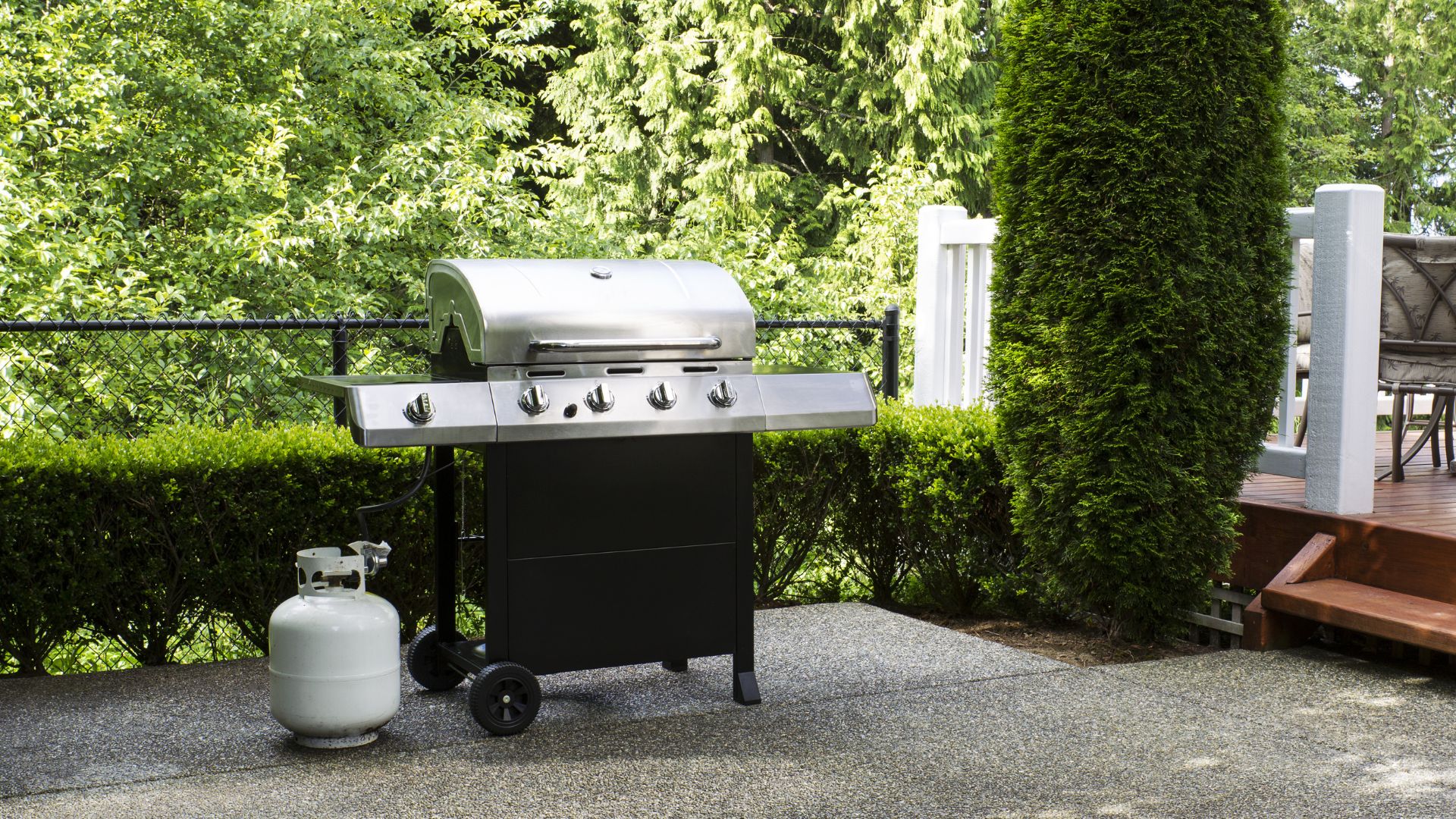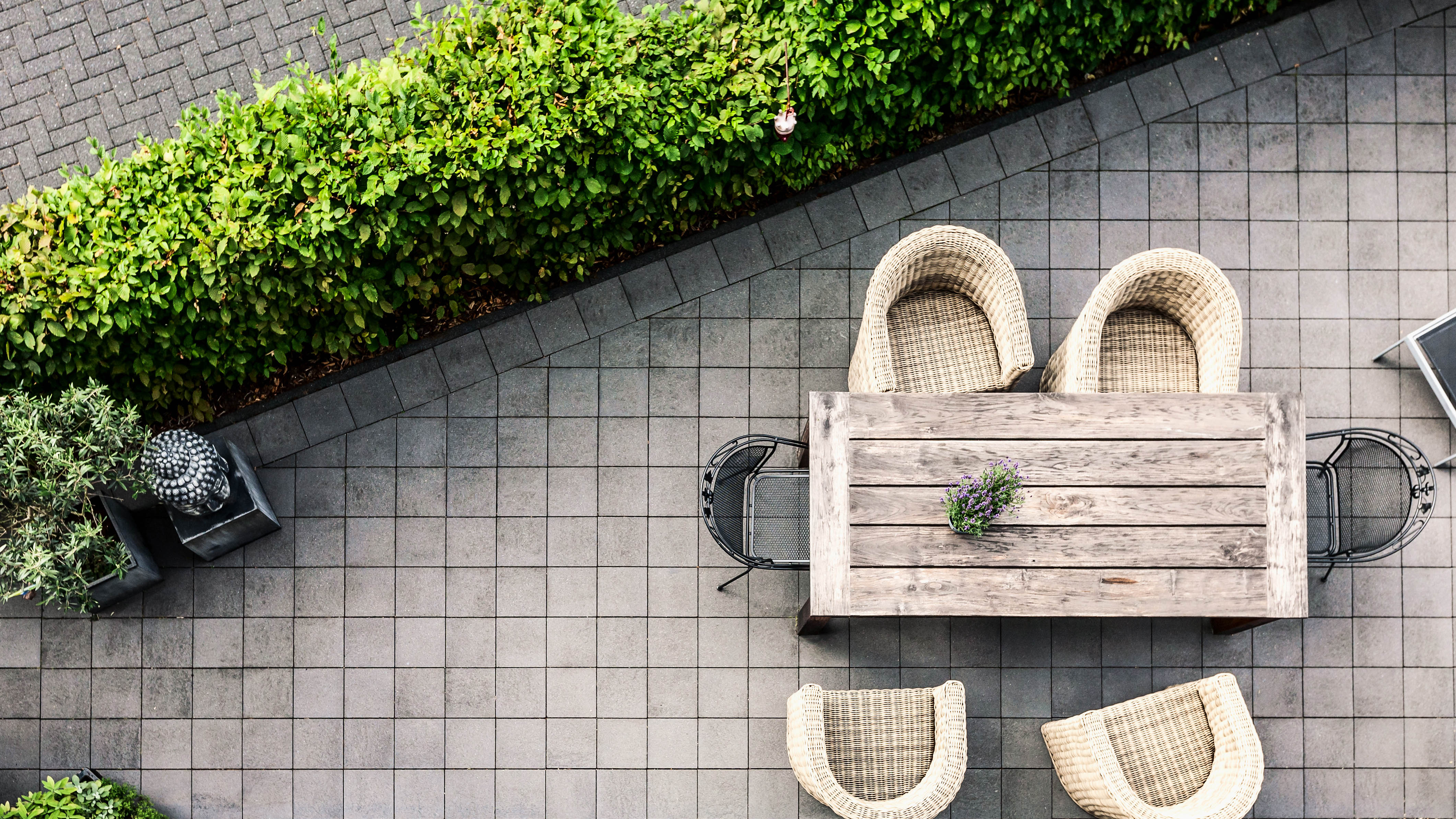
At the first sign of the sun breaking through, BBQ enthusiasts dust off their best grills to get them up and running for a summer of outdoor cooking. No longer limited to eating indoors, we can all enjoy freshly cooked, sizzling food al fresco.
While the warmer weather encourages us to get outside into our yards, it also inspires us to create an attractive outdoor space to relax and spend time with friends and family. So, once you’ve invested in outdoor patio landscaping, garden furniture, and the best plants for your patio, you’ll want to ensure you take good care of them.
However, although your patio area may be fit for a BBQ banquet, Andy McLaughlin, landscaping and paving specialist at RF Paving, warns that hosting a barbecue could be detrimental to your garden and paved areas if not done safely and correctly. He reveals where in the garden you shouldn’t have your grill, what materials can be damaged, and how to clean up ash and food stains from your paving.
1. Where to place your grill

When using a grill, McLaughlin says that (apart from the obvious caution that the user needs to take to protect themselves), care should also be taken of the surfaces and surroundings where the grill will be used. “It is advised never to place the grill directly onto any surface or paving; the direct heat that is generated may cause harm to the surface.
“Surfaces such as wood and plastics, and grass may be the obvious ones to avoid, but even with natural stone and external porcelain, grills should never be placed directly on the surface.”
He explains how high temperatures can cause damage: “Although some materials may be more tolerant to higher temperatures, if the temperature is too high, this may cause material like natural stone to crack. Even with porcelain, which is produced at around 1300°C/2372°F, it will likely scorch the finished surface, spoiling the aesthetic appearance.”
However, McLaughlin adds that the mistake of grilling directly on surfaces is more common with disposable BBQs. In this scenario, he suggests raising it off the ground. “Use a spare piece of non-combustible material, supported by other pieces, such as a spare piece of paving supported by house bricks,” he explains.
It’s less of an issue with standard grills, as he says they are raised off the ground on stands, adding, “Although there may be some sort of heat transfer through the stand, it is very unlikely that the heat is enough to harm the surface.”
2. How to clean food and ash stains from patio pavers

When you’re grilling outside, your patio will inevitably become stained with food spills and ash from the grill. Although McLaughlin says that most marks can be easily removed, he adds, “Attention should be given to the type of mark you want to remove from the paving and what type of paving is being cleaned. If using cleaning solutions, check with the manufacturer that the cleaning substance is suitable for removing the stain, and that it is also suitable to be used on the type of paving.”
He says that fatty foods and drinks are often dropped whilst guests enjoy the hospitality and can stain the paved area. “Often there will be substances that can remove these if staining occurs, but removing these early is key to minimizing long-lasting marks.”
McLaughlin also mentions that some materials are more porous than others, and once stains impregnate the surface, they can become more stubborn to remove. He advises, “Checking with manufacturers regarding application methods and suitability is a must when using any cleaning materials, as some cleaners may not be suitable for the stains.”
Natural method to remove grease stains from paving
When oils or fats are spilt on the patio, McLaughlin says the simplest and often most cost-effective way of removing the marks is to simply use household dishwashing soap.
“This should be applied neat to the affected area, scrubbed with a stiff brush, and then rinsed with water after a short period (15 – 20 minutes) to help remove marks,” he explains.
Household detergent contains sodium hydroxide, otherwise known as caustic soda, which breaks down fats and greases, turning them into a water-soluble solution that can be easily washed away.
The same approach can be taken with cleaning ash or soot spillages from the patio. However, if there are any more stubborn stains or marks, he advises that a specialised cleaning fluid may be required, but adds, “Always check with the manufacturer that it is the correct solution for the stain being remove and that the solution is compatible with the paving.”
3. Ensure your grill is on a flat surface

One of the main concerns when using a grill in your yard is safety, which is why McLaughlin says, “Having a flat and even surface where the BBQ is to be placed is essential.
“If this cannot be achieved in the desired area, then consideration should be given to an alternative area to carry out the grilling. Having an uneven surface could be hazardous, leading to the BBQ being unstable, possibly falling over, and potentially spilling hot coals,” he adds.
Apart from being dangerous, leading to burns and possible objects catching fire, it can damage the grill, while also giving you the task of having to clean a stained area, if the grill was positioned on paving.







